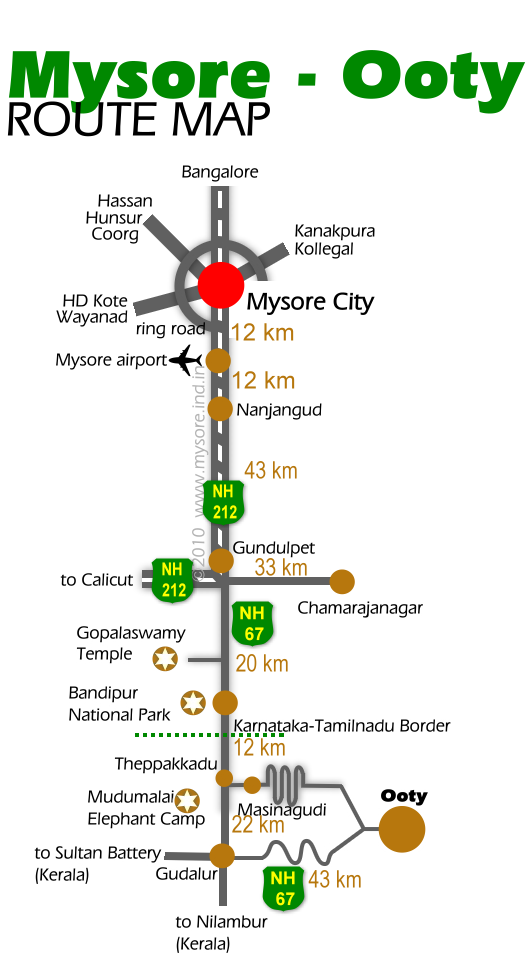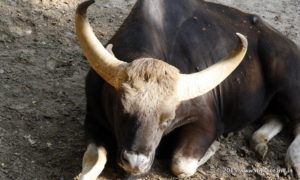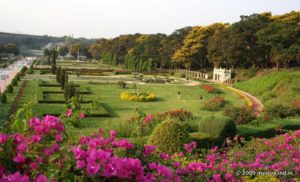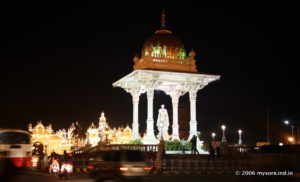
 Scan to see this page on your mobile phone
Scan to see this page on your mobile phoneHimavad Gopalaswamy Betta ( also called Himavad Gopalswamy Betta) is one of those isolated yet accessible attractions in this part of Karnataka. The temple is located atop a hill popularly called Himavad Gopalaswamy Temple. This place is known for its scenic beauty,religious significance and also as a mini adventure flavored picnic spot.
First let's see some details about the main attraction, the temple. Later in this page you'll find the details for traveling to Himavad Gopalaswamy temple.
The original temple is some 700 years old. The history of the origin is a bit hazy and there are a few conflicting views on who built the temple. It is generally attributed to the local king Chola Ballala of Terakanambi ( erstwhile Trikadambapura ). During those days the place was of significant political importance as it was located in the tristate border of three territories ruled by three dynasties - the Gangas of Talakad, Cheras ( kerala ) and the Kadambas.
Numerous temple are tanks were built in this area by various kings who ruled the region. The region later fallen in the domains of Hoysalas, Vijayanagara and finally under the rulers of Mysore by 17th century. Later the place somehow lost its political significance and overshadowed by the nearby town Gundlupet.
Nevertheless when you stand atop the Himavad Gopalaswamy Betta ( hill ), you are well close to a point were the borders of the three modern states (Karnataka, Kerala and Tamilnadu) meet . Towards south is Tamilnadu, towards west is Kerala. The junction is in the middle of a dense and contiguous forest region called the Nilgiri biosphere that's part of the Western Ghats.
The sanctuary of the temple contains the idol of Krishna as Gopala ( Krishna's aspect as cowherd ), and hence the name Gopalaswamy.
The image of Krishna is in the classical form - Krishna holding a flute under a honne tree with cows and cowherds around watching him with revered attention. The image of Krishna is flanked by his consorts, Rukmini and Satyabhama.
Thanks to the foggy nature of the place, the lintel of the doorjambs to the inner hall is often spotted with icicles hanging from it. Therefore the prefix Himavad ( or Himada , Himad - all means snowy/foggy ) Gopalaswamy temple.
In front of the sanctuary stands the conventional prayer hall typical of a Hindu temple. And in the main axis of the temple just as you enter the temple are the flag post and the bali peetam ( sacrificial stone). The hall and its surroundings also contains a large number of images , mostly mythical themes of Vaishnava affiliation.
The whole temple stands inside a compound wall with granite tiled court yard. At one end of the compound wall facing the main temple is the main entrance. Over the entrance is the typical tower with brightly painted godly themes.
Inside the temple at one corder you can spot a shed where the wooden wheels of the ceremonial temple car is kept. The car is assembled for the annual festival during the February-March ( according to Hindu calendar Sravana of Phalguna ).
The temple sits on the slopes of a hillock with grassland all around. The motorable road reaches right in front of the temple. Still you need to climb a few steps to enter the temple.
As mentioned earlier the region is surrounded by numerous tanks and water holes. Though a couple of t are very close to the temple, most of them are located deep in the forest that calls for a trek to reach. There are many myths too associated with these waterbodies.
Thanks to these water bodies, and abundance of grassland, this place is a favorite grazing land of the elephants. If you are lucky you can spot them close to the temple. To vouch their presence one can see the elephant dung scattered in the vicinity.Typically they come closer to the temple early in the morning.
Baring the temple and its immediate vicinity, visitor are prohibited from entering the forest land. There is also a forest department outpost near the temple. There had been many incidents in the past of elephants chasing those strayed into the forest. So weather it is prohibited by law or otherwise, it is not prudent to venture into the forest. Of course, the trekking enthusiasts can always seek for prior permission from the forest department for trekking. Typically a guard accompanies the trekking party in such cases.
As promised earlier, let us see how to reach Himavad Gopalaswamy temple. Himavad Gopalaswamy Betta is located some 87km southwest of Mysore near Gundlupet town on the Mysore to Ooty road . If you are coming from Bangalore side, there are two routes, one via Chamarajanagar other via Mysore to reach Gundlupet.
Immediately after crossing Gundlupet town is junction of Ooty road and Calicut road. Take the Ooty route. At some 8km distance from Gundlupet on the Ooty road you will cross a village called Hangala. As you pass the village on the right side is a large arch over the road towards Himavad Gopalaswamy Betta. From this point the temple is at a distance of about 8km.
There are not many public transport options to reach Himavad Gopalaswamy Betta, baring the few seasonal KSRTC services to this hilltop.
From Gundlupet hire a private vehicle ( negotiate the rate for around Rs 250 for a return trip ).
If you are on a tour to Ooty or Bandipur, Gopalaswamy Betta makes a practical detour. Keep some 2 hours extra time in your original itinerary for the detour. For more on driving directions please see Mysore to Ooty and Mysore to Himavad Gopalaswamy Betta routes.
The hilltop has practically no tourist facility, baring an old forest department guesthouse. That too doesn't serve any food and accommodation has to be booked in advance. This region falls in the reserved forest and so many restrictions apply.If you are on a bike, a flat tyre is the last thing you wand while inside the forest!
The road is open for traffic only during the daytime. Carry food and water. There are no shops near the temple. The nearest place for overnight stay is either Gundlupet town or the accommodations available in the Bandipur National Park. Here too the options are limited. So plan it as a day trip.




















